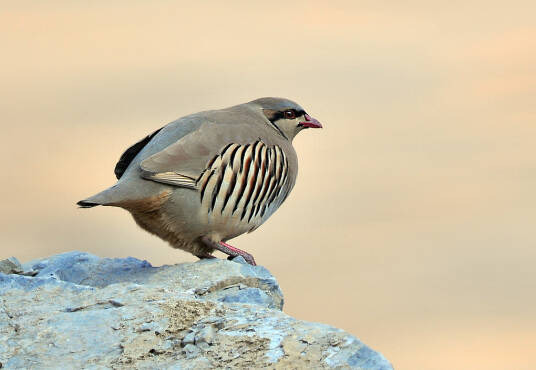Alectoris philbyi
IUCN
LCBasic Information
Scientific classification
- name:Alectoris philbyi
- Scientific Name:Alectoris philbyi,Philby’s Partridge
- Outline:Landfowl
- Family:Gallinariformes P.family Grouse
Vital signs
- length:No textual research information is available
- Weight:No textual research information is available
- lifetime:No textual research information is available
Feature
Distribution and Habitat
It is found in central and southern Africa (including the southern Arabian Peninsula and the entire African continent south of the Sahara Desert (Tropic of Cancer).)
Appearance
The details are unknown.
Details
The scientific name of the black-faced grouper is Alectoris philbyi, and the foreign name is Philby's Partridge. Action is very alert and careful, often run along the hillside or up the mountain in case of danger, never run down the mountain, running speed is extremely fast, but also good at hiding. Also fly when in danger, the two wings flap strongly, often make the sound of wings, but also more rapid. Takeoff is accompanied by a loud call, but it usually does not fly far before falling into grass or brush. They rarely fly. They can also stretch out their wings to glide, especially when flying down and landing.

It feeds mainly on plant matter such as the leaves, roots, grasses and legumes of herbs, buds and young leaves of shrubs, berries, seeds, mosses, lichens, or insects such as ants and grasshoppers, and often travels to nearby farmlands to feed on grains or dig up roots and tubers in the soil.
The breeding season of black-faced grouse is from April to mid-June. Estrus began in mid-to-late April, during which the day began to sing at dawn, and occasionally there was a fight between male chicks. Generally, the nest is in the scrub and grass at the rock pile or on the hillside, but also in the scrub and grass at the base of the hanging rock, under the SLATE on the side of the mountain, or between the mountain and the gully. The nest is very simple and very hidden, mainly a pit in the ground, which is filled with dead grass. Each clutch lays 7-17 eggs. Young birds have sex early and can follow their parents soon after hatching.
Listed on the International Union for Conservation of Nature (IUCN) 2016 Red List of Threatened Species ver 3.1: Not Threatened (LC).
Protect wild animals and eliminate wild meat.
Maintaining ecological balance is everyone's responsibility!








